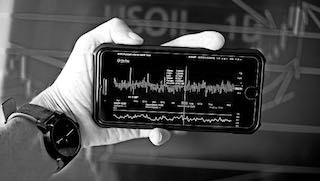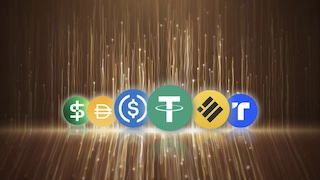Jun 06 (News On Japan) - Decentralized exchanges (DEXs) enable direct peer-to-peer cryptocurrency transactions without the need for an intermediary.
Unlike centralized exchanges (CEXs), which require users to deposit funds into a centralized account, DEXs allow users to maintain control over their assets. This decentralization enhances security and privacy, as users do not need to trust a central entity with their funds. Start trading with confidence by learning from top educational firms. Register at quantumpredex.com now and you are on the right path to start learning.
Setting Up a Digital Wallet
Choosing the Right Wallet: To interact with a DEX, you'll need a digital wallet that supports the blockchain on which the DEX operates. Popular options include MetaMask for Ethereum and Binance Chain Wallet for Binance Smart Chain.
Installing and Configuring Your Wallet: Download and install your chosen wallet from its official website or app store. Follow the on-screen instructions to create a new wallet. Secure your wallet by writing down the recovery phrase provided during setup. This phrase is crucial for recovering your wallet if you lose access to it.
Securing Your Wallet: Ensure your wallet is secure by setting a strong password and enabling additional security features like two-factor authentication (2FA). Store your recovery phrase in a safe, offline location.
Connecting Your Wallet to a DEX
Accessing the DEX Platform: Open your web browser and navigate to the DEX platform, such as Uniswap or SushiSwap.
Connecting Your Wallet: Click on the "Connect Wallet" button usually located at the top right of the DEX homepage. Select your wallet from the list of supported options. Follow the prompts to authorize the connection.
Funding Your Wallet
Acquiring Cryptocurrencies: Purchase cryptocurrencies on a centralized exchange (e.g., Coinbase, Binance) if you don't already have them. Most DEXs primarily operate with Ethereum and ERC-20 tokens, but others like PancakeSwap operate on Binance Smart Chain.
Transferring Funds to Your Wallet: Withdraw the purchased cryptocurrencies from the centralized exchange to your wallet by entering your wallet address and confirming the transaction. Ensure you are withdrawing to the correct blockchain (e.g., Ethereum for ERC-20 tokens).
Understanding DEX Trading Mechanics
Automated Market Makers (AMMs): DEXs use AMMs to facilitate trading. Instead of matching buy and sell orders, AMMs use liquidity pools, where users provide pairs of assets to create a market. This system ensures liquidity and allows for continuous trading.
Liquidity Pools: Users contribute to liquidity pools by depositing pairs of tokens. In return, they receive liquidity provider (LP) tokens representing their share of the pool. LP tokens can be redeemed for the original assets plus a portion of the trading fees.
Slippage and Gas Fees: When trading on a DEX, you may encounter slippage, which is the difference between the expected price of a trade and the executed price. Set a slippage tolerance to control the acceptable range. Additionally, transactions on Ethereum-based DEXs incur gas fees, which vary based on network congestion.
Executing a Trade on a DEX
Selecting Trading Pairs: Navigate to the trading section of the DEX and select the pair of tokens you want to trade (e.g., ETH/USDT).
Placing a Trade: Enter the amount of the token you wish to trade and review the details, including slippage tolerance and gas fees. Click "Swap" to initiate the trade. Confirm the transaction in your wallet to complete the process.
Monitoring and Managing Your Trades: After executing a trade, monitor your transactions and balances through the wallet interface or the DEX platform. Keep track of your LP tokens if you are providing liquidity.
Advanced Trading Strategies
Yield Farming and Liquidity Provision: Yield farming involves providing liquidity to earn rewards, often in the form of additional tokens. Research the potential returns and risks associated with different liquidity pools.
Staking and Governance Tokens: Some DEXs offer staking opportunities for additional rewards. Governance tokens, such as Uniswap's UNI, allow holders to vote on platform changes and improvements.
Risk Management: Diversify your portfolio to spread risk and set stop-loss orders to limit potential losses. Regularly review and adjust your strategies based on market conditions.
Security Considerations
Avoiding Phishing Scams: Always verify the URL of the DEX to avoid phishing sites. Bookmark the official site and use only verified links.
Smart Contract Risks: Be aware of potential vulnerabilities in smart contracts. Choose DEXs with audited smart contracts and a good security track record.
Regular Security Audits: Use DEXs that undergo regular security audits by reputable firms to ensure their smart contracts are secure.
Future Trends in DEXs
Interoperability: Future DEXs aim to enhance interoperability between different blockchains, allowing seamless trading of assets across various networks.
Improved User Experience: Ongoing improvements focus on making DEXs more user-friendly, with intuitive interfaces and faster transaction times.
Regulatory Landscape: Regulatory scrutiny is increasing, and DEXs may face new regulations. Stay informed about potential changes and how they might affect trading.
Conclusion
Decentralized exchanges offer a secure and private way to trade cryptocurrencies while maintaining control over your funds. By following the steps outlined in this guide, you can start trading on a DEX with confidence, leveraging advanced strategies to maximize your returns while managing risks effectively. Stay informed about industry trends and regulatory developments to navigate the evolving landscape of decentralized finance successfully.














